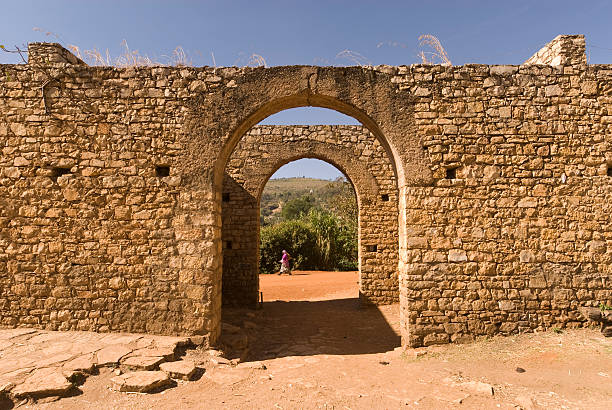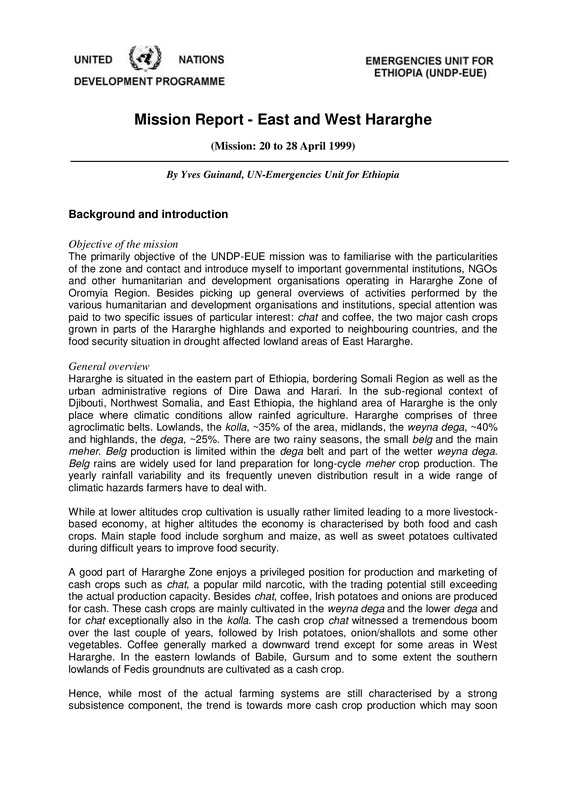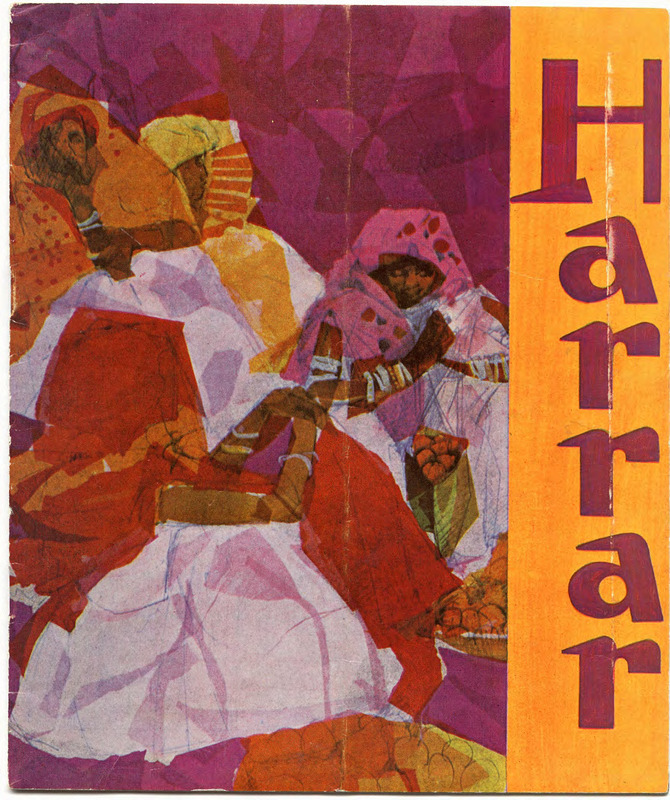Manuscript Coming Soon!
-
Extract From Documents of Foreign DiplomacyDate:Extract : from several Volumes Contributor ; Abdulahi Sherif Note : Pleae read " Barar " as" Harar " , " Majour Bunter " As " Majour Hunter " ( electronic tranlation error)
-
Press Release - ESAT’s PrejudiceDate: August 17, 2018Press Release The Global Harari Unity Advocacy Council believes that democracy exists only with a free and unfettered press. The Council does not agree with a press that disseminates false and unfounded information that could have the potential to ignite violence, as we repeatedly witnessed a broadcast through the so-called ESAT television network that has declared open war on the legitimacy of the Harari State. Though this outlet is known to be an equivalent of the old Pravda propaganda machine of the Soviet era, it has to be identified for what it stands for- to promote the supremacy of Amhara culture and tradition over every region that has been annexed through the territorial aggrandizement policy of their emperors. ESAT, certainly represents the worst in media practice, having justified its hidden agenda that stands on the way of the peaceful coexistence of peoples by broadcasting unfounded and often out of sync information
-
A PREJUDICED DEMEANOUR-Date: November, 2019A PREJUDICED DEMEANOUR Habetamu Ayalew's Misappropriated Journalism of(Hear it all from me, Takeit from me &Believein me, I know it all!)and His Repulsive perception on Harar " In a sound journalistic platform, a responsible media strives to impart and deliver a discourse on a subject matter responsibly enough having correct background information be it on verbatim, recorded archived history or self physical observations without favour and bias. It is hoped that Ethio360media does endeavour to uphold journalistic etiquette and dictum of do not cause harm and do not infringe on the rights of others nor be the vessel for disharmony, disgruntlement and misgivings rather strives to maintain the highest standard of neutrality. Nevertheless while acknowledging the right of freedom of expression which is as well premised within a context of responsibility in imparting informations in its actuality and truthfulness, Having heard Habetamu Ayalew's narration such unwarranted vilification on the people of Harar and selectively on Abdella Sherif shouldn't be ignored as it is inflammatory, prejudicial, bias, defamatory and demeaning having an ulterior motive to garner political expediency and malicious intent." <strong
-
Council For An Autonomous Jewish Province in HarrarDate: 1938-1944Correspondence Letteres between Jewish council, US, and Ethiopia ......My proposal is to unite the so-called HARRAR-territory of Ethiopia with part of British-Somaliland and create there a state for the European Jews.....
-
THE INFLUENCE OF ARAB AND ASIAN TRADERS ON HARARI MUSIC AND CULTURAL IDENTITYDate: December 6, 2023The objective of this study is investigating how and why the Harari peoples Music and cultural Identity isdifferent from the other parts of the Ethiopian people. This study has mainly focused on the forms and thescale and why this scale or music, forms and cultural identities are different from the other parts of Ethiopia.
-
Land ownership in Hararge ProvinceDate: June, 1966
-
Dil Shahan ( ዲል ሸሀን )Date: 2007-NovOር መህጂጃች 2 , ሐድነት 4 ,ጅምጅምቲ ሞ ድምድምቲ 6 , ሩህኻድ Aለፉው 7, Uመት ሂልቂ 10 , Oር መህጂጃሌ ዚትሰጠ 13 ኮOት ኣዳው መትጋበት 15, ኣው Aባድር ሐረሪ ወለባይ 16 , ሐረሪ መሀድ ኮንግረስ ዲያስፖራቤ 18 _x000D_
-
Khat culture and economic wellbeing: Comparison of a chewer and non-chewer families in Harar cityDate: Nov, 2020This study contributes to the debate on khat by comparing the family wellbeing of khat chewer (consumer) and non-chewer families in Harar city, by using the International Wealth Index’s (IWI) characterization of wellbeing. The study utilized the survey method. Respondents were identified using a cluster sampling method. The data was gathered using an interview schedule, in-depth interviews, and non-participant observation...
Randomly Generated
-
 E.J. Brill's first encyclopaedia of Islam 1913-1936Date: Not specifiedThis book is available online
E.J. Brill's first encyclopaedia of Islam 1913-1936Date: Not specifiedThis book is available online -
Mission Report - East and West HarargheDate: 1999The primarily objective of the UNDP-EUE mission was to familiarise with the particularities of the zone and contact and introduce myself to important governmental institutions, NGOs and other humanitarian and development organisations operating in Hararghe Zone of Oromyia Region. Besides picking up general overviews of activities performed by the various humanitarian and development organisations and institutions, special attention was paid to two specific issues of particular interest: chat and coffee, the two major cash crops grown in parts of the Hararghe highlands and exported to neighbouring countries, and the food security situation in drought affected lowland areas of East Hararghe. General overview Hararghe is situated in the eastern part of Ethiopia, bordering Somali Region as well as the urban administrative regions of Dire Dawa and Harari. In the sub-regional context of Djibouti, Northwest Somalia, and East Ethiopia, the highland area of Hararghe is the only place where climatic conditions allow rainfed agriculture. Hararghe comprises of three agroclimatic belts. Lowlands, the kolla, ~35% of the area, midlands, the weyna dega, ~40% and highlands, the dega, ~25%. There are two rainy seasons, the small belg and the main meher. Belg production is limited within the dega belt and part of the wetter weyna dega. Belg rains are widely used for land preparation for long-cycle meher crop production. The yearly rainfall variability and its frequently uneven distribution result in a wide range of climatic hazards farmers have to deal with. While at lower altitudes crop cultivation is usually rather limited leading to a more livestockbased economy, at higher altitudes the economy is characterised by both food and cash crops. Main staple food include sorghum and maize, as well as sweet potatoes cultivated during difficult years to improve food security. A good part of Hararghe Zone enjoys a privileged position for production and marketing of cash crops such as chat, a popular mild narcotic, with the trading potential still exceeding the actual production capacity. Besides chat, coffee, Irish potatoes and onions are produced for cash. These cash crops are mainly cultivated in the weyna dega and the lower dega and for chat exceptionally also in the kolla. The cash crop chat witnessed a tremendous boom over the last couple of years, followed by Irish potatoes, onion/shallots and some other vegetables. Coffee generally marked a downward trend except for some areas in West Hararghe. In the eastern lowlands of Babile, Gursum and to some extent the southern lowlands of Fedis groundnuts are cultivated as a cash crop. Hence, while most of the actual farming systems are still characterised by a strong subsistence component, the trend is towards more cash crop production which may soon Hararghe Mission: April 1999 2 bring the majority of Hararghe farmers to the cross-roads between subsistence and cash economy. The vast majority of the rural population is living from agriculture, with some pastoralists and agropastoralists in the lowlands. Increasing population density coupled with the lack of alternative employment opportunities leads to progressive land pressure and subsequent shrinking of individual landholdings or migration and utilisation of marginal lowland areas for agriculture. Climatic hazards are increasingly frequent, with pest infestations and crop diseases additionally hampering crop production. Coupled with high land pressure, the margin for farmers’ agroeconomic decisions is progressively narrowing. The shift to an increased and intensified chat production is one of the farmers’ response to face some of the constraints. But those areas, especially the lowland pastoralist and agropastoralist areas, where agricultural substitutes such as chat cannot make up for prevailing constraints, are increasingly suffering from food insecurity.
-
HararDate: Not specifiedHarar Harrar is these things, and Harrar is much, much more. The city is set high on the southern ridges of the Eastern Escarpment, overlooking the wild bush of valleys draining into Webi Shebeli country. Harrar is remarkable for climute alone, as its dry air, almost cont in uous sunshine, and pleasantly monotonous average temperature of 71.5 degrees F. lure the visitor with a sense of well-being unmatched elsewhere.
-
 A page from Harari Marriage and Divorce RecordsDate: 1877A page from marrriage records of Hararies from the year 1875/ 1877. The record lists the bride and bridegrooms names, and witnesess. The file contains 524 records, among which 494 are marriage ,and the remaining 30 are divorce cases. Dowery/ Meheri types are indicated in each situation. Cash, farming land with types of vegetation are some of meheris listed in the document.
A page from Harari Marriage and Divorce RecordsDate: 1877A page from marrriage records of Hararies from the year 1875/ 1877. The record lists the bride and bridegrooms names, and witnesess. The file contains 524 records, among which 494 are marriage ,and the remaining 30 are divorce cases. Dowery/ Meheri types are indicated in each situation. Cash, farming land with types of vegetation are some of meheris listed in the document.










